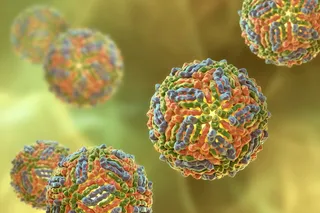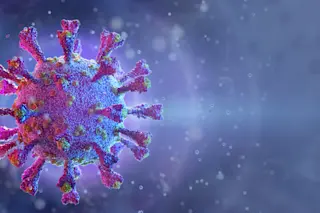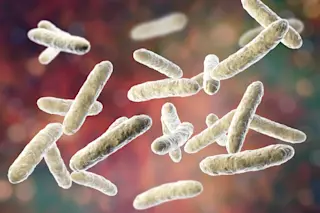As swine flu is now prevalent in 41 states, doctors are getting plenty of chances to study the workings of the disease. They now know that in severely ill patients, intense inflammation in the lungs prevents oxygen from being tranfered to the blood stream. Says physician Robert Fowler:
“Most patients are still able to take breaths, but these breaths are ineffective" [Science News].
That oxygen deprivation can cause widespread organ damage. The speed with which swine flu patients can go downhill marks the H1N1 virus as strikingly different from the seasonal flu virus, doctors say.
"In severe cases, patients generally begin to deteriorate around three to five days after symptom onset. Deterioration is rapid, with many patients progressing to respiratory failure within 24 hours, requiring immediate admission to an intensive care unit" [Reuters]
, says World Health Organization doctor Nikki Shindo. Doctors say that severely ill patients should promptly be put on breathing machines and given antiviral drugs like Tamiflu. In cases where patients' respiratory systems have already crashed, some doctors are trying
a treatment called extracorporeal membrane oxygenation, in which blood is extracted from each patient and passed through a machine that adds oxygen [Science News].
U.S. health officials announced this week that
half of those hospitalized with the new H1N1 virus are under 25, a clear illustration that the pandemic is affecting the young disproportionately [Reuters].
Only 7 percent of hospitalizations have been among people 65 and older, and researchers now believe that many older people may have some immunity to the illness. The pandemic
H1N1 virus has parts found in earlier flu strains, and some people past age 60, who may have been exposed to similar viruses in their youth, may have some latent immune cells that protect them [Reuters].
In New York, a hubbub broke out over a state policy that required all health care workers to be vaccinated against the swine flu, or face termination. The policy is intended to prevent hospital workers from spreading the disease to their patients, who may have weakened immune systems or other vulnerabilities. But lawsuits were filed by workers who feel that the swine flu could be harmful or might simply be unnecessary, despite the repeated statements from public health officials that the vaccine is both safe and important. Now, a New York State judge has temporarily suspended the rule, and
scheduled an Oct. 30 hearing to discuss whether the suspension should be made permanent [The New York Times].
The vaccine is gradually being distributed, with priority going to health care workers, children, pregnant women, and people with underlying health conditions. But the vaccine's rollout to the rest of the U.S. population will be slower than predicted, because pharmaceutical companies haven't made as much vaccine as they hoped to. Anne Schuchat of the Centers for Disease Control and Prevention says that
while 40 million doses had been anticipated for the end of October, only about 28 to 30 million doses would be available. "Yields for vaccine are lower than would be hoped," Schuchat said [Reuters]
. It's been said before, but it's worth repeating: Pregnant women are particularly vulnerable to the swine flu, because
pregnancy suppresses the immune system to protect the fetus, and the growing baby makes it harder for a mother to clear her lungs [The New York Times].
Some pregant women have been wary of the vaccine because they worry that it could harm their fetus, but doctors refute that claim and urge them to get vaccinated as soon as possible. Aubrey Opdyke, a Florida woman who lost her unborn baby and nearly her life to swine flu, adds her voice to those of the doctors. Finally, a new government web site contains all the latest news about prevention, vaccine availability, and outbreaks. It even has a self-evaluation that helps people determine if they might have swine flu. Related Content: 80beats: This Week in Swine Flu: Vaccines Arrive, and Doctors Combat Myths 80beats: This Week in Swine Flu: Pregnant Women’s Concerns & Hospital Woes 80beats: This Week in Swine Flu: Vaccine Coming Soon, but What Do Parents Think?Image: iStockphoto














